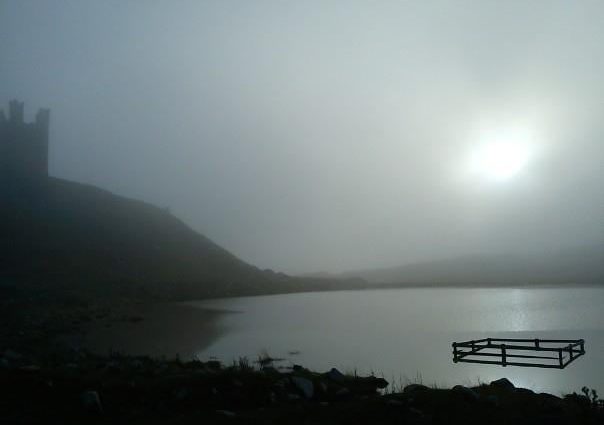
The Stately Homes of England,
Though rather in the lurch,
Provide a lot of chances
For Psychical Research –
There’s the ghost of a crazy younger son
Who murdered, in thirteen fifty-one,
An extremely rowdy Nun
Who resented it,
And people who come to call
Meet her in the hall.
The baby in the guest wing,
Who crouches by the grate,
Was walled up in the west wing
In fourteen twenty-eight.
If anyone spots
The Queen of Scots
In a hand-embroidered shroud
We’re proud of the Stately Homes of England.
Noël Coward, of course. Who else? No one else writes like that. He wasn’t known as The Master for nothing!
I can’t pretend that I have researched all the stately homes (and castles, for they are often one and the same) in the North East, but I have managed to find two White Ladies (in Crook Hall in Durham and in Washington Old Hall), two Grey Ladies (Lady Mary Berkeley who died of heartbreak upon hearing about her husband’s extra-marital activities in Chillingham Castle, and the wife of a Bishop of Durham, accidentally killed in Durham Castle), a noble lady imprisoned inside a crystal tomb in Dunstanburgh Castle, Lady Lily of Lumley Castle, and an Edwardian lady in a pink hat with a parrot and a cat in Beamish Hall, now an hotel, in County Durham.
There’s also an “Old Hell Cat” of a lady in Raby Castle. She was Elizabeth, wife of Christopher Vane, 1st Baron Barnard of Raby, a bad-tempered and totally selfish woman who had to have her own way, and she is said to stalk the castle battlements, knitting with red-hot needles!
And there’s another Grey Lady who carries a new-born child, but she isn’t found inside a stately home but out of doors in Crossgate Peth, Durham City. After the Battle of Neville’s Cross in 1346 she is said to have come looking for her dead husband, an English soldier from whom she had parted on bad terms because she didn’t want him to fight.
And there’s yet another Grey Lady in the Crossgate area. This time it’s a young Victorian girl from a workhouse near Allergate who was killed by a soldier who confessed to her murder many years later while he was living abroad so he didn’t have to answer for his crime.
There are a few ghostly children, usually only heard but not seen, and a number of examples of shrieks and wails and howls of pain, but I have come across no examples of anyone like
Wiv ‘is ‘ead tucked underneef ‘is arm, ‘e walks the Bloody Taar
Nor have I found any headless horsemen, that staple of ghostly fiction who isn’t, so it would seem, seen anywhere in the North East.
Soldiers, headless or otherwise, are quite uncommon, but The Ancient Unicorn at Bowes has more than its fair share. It is haunted by a group of Roman soldiers, said to be centurions (NCOs) from a near-by second century fort who were killed, not in battle but by a bunch of local villains who, for some reason, had taken a dislike to them. They walk, it is said, on the anniversary of their deaths.
Actually the ghosts of two young lovers are also supposed to haunt The Ancient Unicorn. The boy died and, heartbroken, the girl soon followed him and they are buried nearby in the same grave. It would be nice if it was a Romeo and Juliet story, wouldn’t it? But no, it is just a sad tale. No account of ghosts in stately homes would be complete without mention of the very many ghosts of Chillingham Castle near Wooler in Northumberland. But that’s a different story…
Please follow us on social media, subscribe to our newsletter, and/or support us with a regular donation


